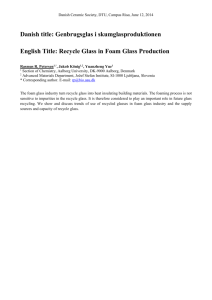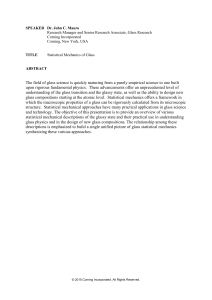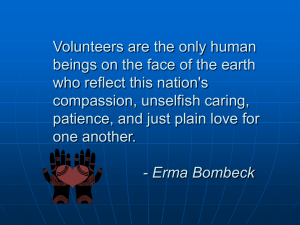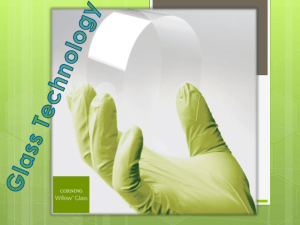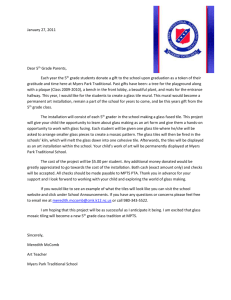Glass Analysis Lab Law Enforcement II Forensics Mrs. Ashley Name
advertisement
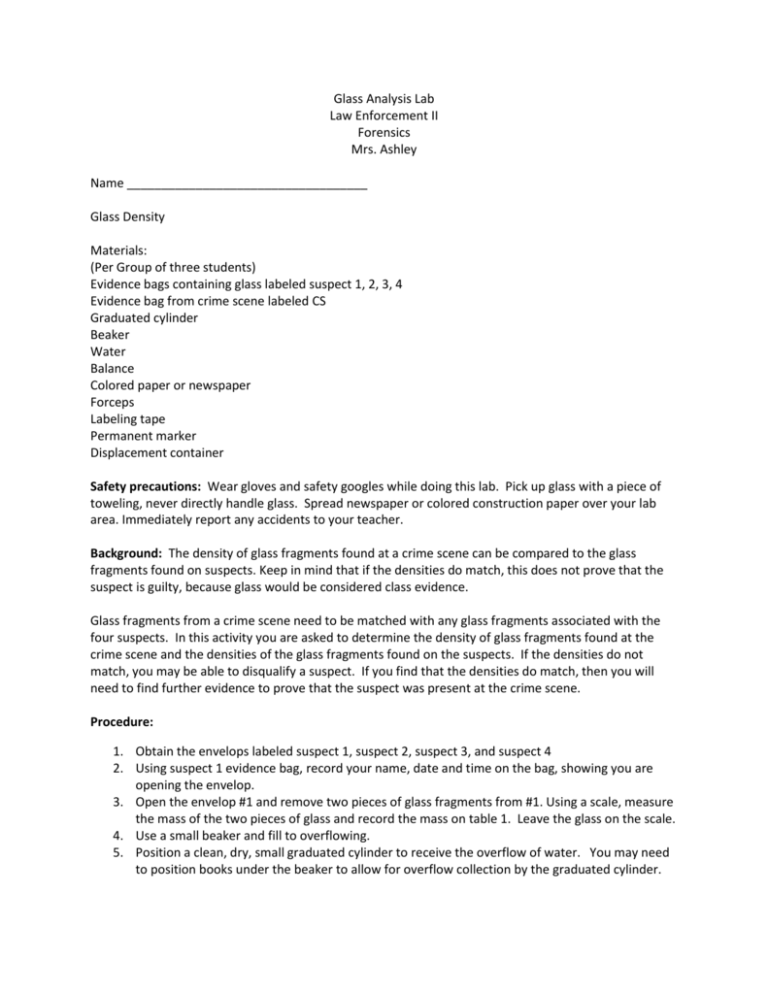
Glass Analysis Lab Law Enforcement II Forensics Mrs. Ashley Name ___________________________________ Glass Density Materials: (Per Group of three students) Evidence bags containing glass labeled suspect 1, 2, 3, 4 Evidence bag from crime scene labeled CS Graduated cylinder Beaker Water Balance Colored paper or newspaper Forceps Labeling tape Permanent marker Displacement container Safety precautions: Wear gloves and safety googles while doing this lab. Pick up glass with a piece of toweling, never directly handle glass. Spread newspaper or colored construction paper over your lab area. Immediately report any accidents to your teacher. Background: The density of glass fragments found at a crime scene can be compared to the glass fragments found on suspects. Keep in mind that if the densities do match, this does not prove that the suspect is guilty, because glass would be considered class evidence. Glass fragments from a crime scene need to be matched with any glass fragments associated with the four suspects. In this activity you are asked to determine the density of glass fragments found at the crime scene and the densities of the glass fragments found on the suspects. If the densities do not match, you may be able to disqualify a suspect. If you find that the densities do match, then you will need to find further evidence to prove that the suspect was present at the crime scene. Procedure: 1. Obtain the envelops labeled suspect 1, suspect 2, suspect 3, and suspect 4 2. Using suspect 1 evidence bag, record your name, date and time on the bag, showing you are opening the envelop. 3. Open the envelop #1 and remove two pieces of glass fragments from #1. Using a scale, measure the mass of the two pieces of glass and record the mass on table 1. Leave the glass on the scale. 4. Use a small beaker and fill to overflowing. 5. Position a clean, dry, small graduated cylinder to receive the overflow of water. You may need to position books under the beaker to allow for overflow collection by the graduated cylinder. 6. Slowly add the two glass fragments to the beaker while you collect the water that is displaced in the small graduated cylinder. 7. Measure this volume of water displaced by looking at how much is in the graduated cylinder. 8. Record the combined volume of the two glass fragments in Table 1. 9. Calculate the density of glass fragment 1 by dividing the mass by the volume (grams/ml). Record this amount for density in Table 1 10. Remove the two glass fragments, place on a paper towel and then after a few minutes place back in the evidence bag for #1. 11. Repeat for the crime scene glass. Table 1 Sample Combined Mass of Two Fragments Volume of Two Fragments Density (m/v) (Grams/ml) 1 2 3 4 Crime Scene Questions: 1. Does the density of the glass fragments found on any of the four suspects match the evidence found at the crime scene? Explain your answer. 2. Describe how you could improve your results to get more accurate results. 3. Describe why glass is considered class evidence.

